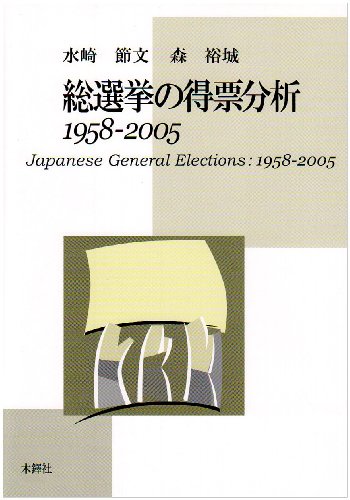1 0 0 0 得票データからみた並立制のメカニズム
- 著者
- 水崎 節文 森 裕城
- 出版者
- 日本選挙学会
- 雑誌
- 選挙研究 (ISSN:09123512)
- 巻号頁・発行日
- no.13, pp.50-59,269, 1998
The general election held on October 20, 1996 was the first election after the 1994 electoral reform of the House of Representatives. The new electoral system combines two different electoral systems: a single-member constituency system (300 seats) and a proportional representation system (200 seats). Using locality-level aggregate data, this paper examined the impact of the new electoral system on voting behavior and campaign strategies, and identified a mechanism through which a voter's choice of candidates/parties in one system influences his/her choice in the other.
1 0 0 0 OA 小選挙区比例代表並立制における地域票の動向
- 著者
- 水崎 節文 森 裕城
- 雑誌
- 椙山女学園大学研究論集 社会科学篇 (ISSN:13404059)
- 巻号頁・発行日
- no.33, pp.1-17, 2002
1 0 0 0 JED-M(水崎・森)衆議院議員総選挙データ
- 著者
- 水崎節文 森裕城制作・著作
- 出版者
- エル・デー・ビー
- 巻号頁・発行日
- 0000
1 0 0 0 中選挙区制における候補者の選挙行動と得票の地域的分布
- 著者
- 水崎 節文 森 裕城
- 出版者
- Japanese Association of Electoral Studies
- 雑誌
- 選挙研究 (ISSN:09123512)
- 巻号頁・発行日
- vol.10, pp.16-31,123, 1995
The multimember constituency system of the Japanese House of Representatives adopted in 1925 has lasted up to the present time, with the exception of a general election in 1946. This system is unique in the world and has influenced the electoral behavior of candidates as well as voters in Japan. It is inevitable that candidates from the same party are in competition.<br>One remarkable characteristic of the election results at the district level is that votes obtained by an individual candidate show a tendency to concentrate into the particular area. To examine the regional distribution of votes, we use the RS index and the DS index which was devised by Mizusaki, and trace the scores in the general elections from 1958 to 1993. The computed values have been decreasing year by year, but in some rural districts both indices show still very high scores.<br>The phenomenon of the concentration of votes in a particular area in a district has been considered as a reflection of premodern electoral behavior. Although this view cannot be denied in this paper, we try to explain the phenomenon in a different way. We would like to show that the spatial competitions aomng the plural candidates from the same party can be interpreted as a rational behavior with the strategy to win elections.

